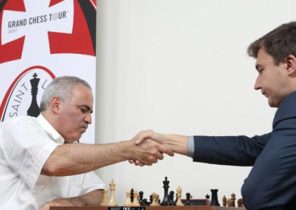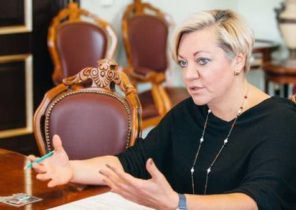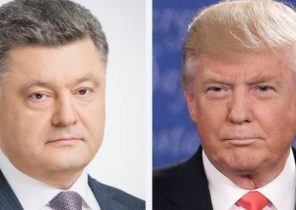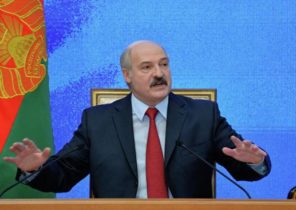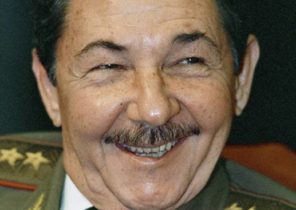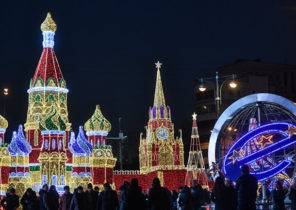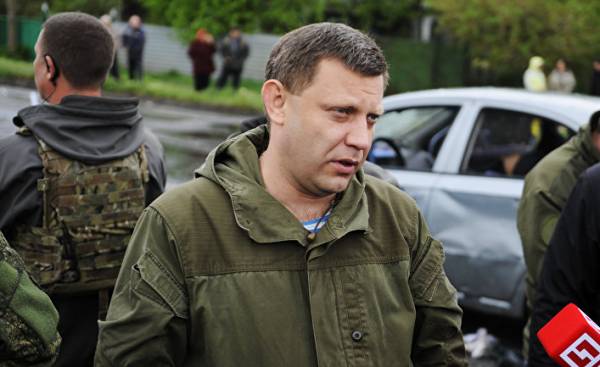
Holding a plastic box with soft toys, a militia leader enters the apartment to greet its new tenants — a young family whose previous house was in complete disrepair. Alexander Zakharchenko, who controls the self-proclaimed Donetsk people’s Republic in Eastern Ukraine, presenting a young family gifts, gives them the keys and the documents to the apartment. Then he examines her and nods, looking at brand new appliances and furniture.
While a team of TV crews shooting this orchestrated event, mother of four children named Helen korkunova talks about how she wrote a letter Zakharchenko, where she asked for help. Her husband Alex hastens to add: “We are very grateful for what we so quickly identified the apartment… Now she will be our family nest”.
In the conclusion of the report of the local correspondent of the “First national channel” talks about how Zakharchenko “personally appreciated the location of the apartment and the quality of her work — and wished them health and happiness.”
This is far from the refinement report cannot be called an exception. Ukrainian separatists impose on the media standards of the Soviet era: they force journalists to repeat stale propaganda, to limit the stereotypes and resurrect the cult of Joseph Stalin.
Such reports can tell a lot about strategy in response to the volatile region where troops of the Ukrainian government fighting Russia-backed separatists in 2014. Insistence to portray the militia leaders as responsible civil servants suggests that the Kremlin wants these customized to fight people for some time remained at the helm in the region.
Given the fact that the Ukrainian conflict continues for the fourth year, this situation does not Bode well.
“Russia is trying to appear constructive participant in the negotiations, but it is not made clear which option she wants to choose — said Donald Jensen (Jensen Donald), an expert on Russia and researcher at the Johns Hopkins University. Signals are extremely important, and depending on the circumstances, they change.”
By the 1980s, the years TV has become a key component of Soviet mass culture, and today it remains the main source of information for most Russians and Ukrainians. In 2014, when Moscow began to establish new governing structures in the centers of the movement of the militia in Donetsk and Luhansk, the local media too has changed significantly.
The war-ravaged East of Ukraine with its coal mines, factories and steel enterprises is a unique example for the crest of time: many of its inhabitants a powerful influenced by the nostalgia for Communist times and heavy industry. The legacy of the Soviet Union was firmly entrenched in the collective unconscious.
So the news are presented, to emphasize the wisdom and the generosity of the state — as was done in the era of the Soviet Union. The key political message, designed to consolidate the concepts and interpretations that benefit the ruling elite, carefully worked out in advance.
“New Russia TV”, another separatist channel recently showed a documentary about the origins of the current conflict. In this film, full of images and attitudes of the Soviet era, says the anti-knit, hard-working Slavic representatives of the Russian world against the perverse individualism and imperialist West.
“Today, the Donbas has become a hotbed of geopolitical struggle between West and East, — said the speaker. — Our city was almost on the front line. Kill us, to the Russian people… are unable to reject the chains of consumer society”.
Strongly criticizing the influence of the West, the filmmakers compare the commercial for McDonald’s with Soviet military parades, footage taken on wall Street, with the production lines of factories, such comparisons may fairly banal, but they are designed to reinforce the frustration of the residents of the Donbass region, which the Soviet government highly valued and which are now faced with war and economic crisis. Although the movie has several references to the new Hollywood blockbusters and although it is widely promoted in social networks, its main idea is as old as the hammer and sickle.
Low-budget historical program is one of the foundations of these separatist channels. One of the leading TV channels, Yakov Dzhugashvili, is the grandson of Stalin. He admires the late dictator and considers his “duty to expose the anti-Stalinist and anti-Soviet lies.” Dzhugashvili does not mention either the Great terror or the Gulag, extolling Stalin as a man who “served others”.
Another local expert on the history is another TV show in which he used models of tanks and soldiers, to demonstrate the heroic feat of the so-called Panfilov, whose story has become one of the most prominent Soviet legends, though the publication of secret documents in 2015, finally dispelled this myth.
The quality of these programs is extremely low, and their leading show quite a controversial reading of history. But their message is clear: your ancestors fought the Nazis, and you have to continue this fight today. That is, they are trying to turn the past into a weapon.
“Propaganda, based on the image of fascism, is an extremely effective technique, and it has long influenced the public opinion in Russia, said Kristin Roth-EY (Kristin Roth-Ey), Professor of Russian history at University College London, specializing in Soviet culture and media. — It’s not a mindless atavism. They know it works.”
Moreover, the limited information content and the regular repetition is also very similar to the program of the Soviet television. The regular repetition allows you to create “dominant symbols”, which have an impact on and allow you to use — the “cultural memory” of the population, says Katerina Khinkulova specializing in media of Donbass.
Presentation of the Ukrainian militia leaders is a much more “Soviet” than with the presentation of the President of Russia Vladimir Putin. Journalists are often shown as the leader of Luhansk, Igor Plotnitsky holds meetings with his Ministers and publicly criticized them sitting on the background of the national flag of the people’s Republic, which depicts the sun’s rays, ears of wheat and a red star.
Russian television also sometimes shows how Putin scolds his assistants, but he is the person with which the Russians are much easier to identify themselves.
“Putin is a kind of form of entertainment, consumer product, — said Roth-EY. — Remember the photos of Putin shirtless. In Soviet times no one even had not occurred to do of Brezhnev and Khrushchev sex symbols”.
Soviet Union was famous for its sports parades and high skill gymnastics. Socialist realism promoted heroic images, from resilient youth movement “Komsomol” to the team spirit of the athletes. Although the scale of the images Donetsk separatists concede Soviet predecessors, they promote very similar ideals.
One March report on local television was dedicated to a group of young people who do Jogging in the streets, calling to abandon the use of alcoholic beverages while waving separatist and Communist flags — time-tested tactics reinforcement of patriotism appeals to the physical purity.
Styling also returned drummers — as in Soviet times called the workers, who demonstrated extraordinary performance. The war destroyed the economy of the East of Ukraine, but the separatist-controlled farm and industrial companies regularly boast of their performance and ability to exceed performance standards. If you believe the local media, the authorities of the separatist regions has provided pensioners thousands of tons of free coal and managed to produce enough food in Donetsk even started to produce mozzarella cheese.
Such reports aim to lift the spirit, creating the illusion of self-sufficiency and the revival of industry. In reality the separatist East of Ukraine can not exist without the support of Moscow. (Russia even promised to provide the region with electricity, after Kiev stopped its supply due to debt.)
Nostalgia for the past is bordered by semicarinata. In the Donbass it took the form of “a strange compilation of historical memory”, as said Alexander Clarkson (Alexander Clarkson), Professor king’s College London. “Putin’s media machine chooses the pieces of the history of Soviet and tsarist Russia, which may be useful for the promotion of the ideology of the authorities at a particular point, and then exaggerates their significance by means of modern media technology to make a lasting impression on the audience.”
